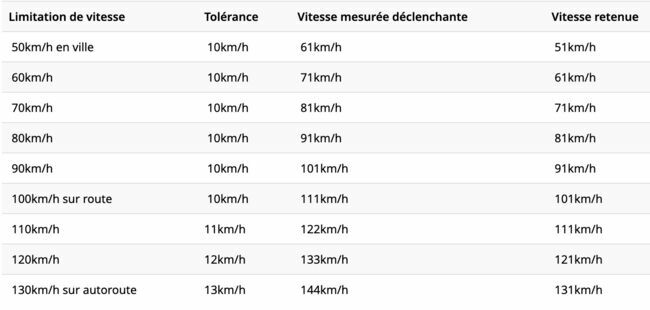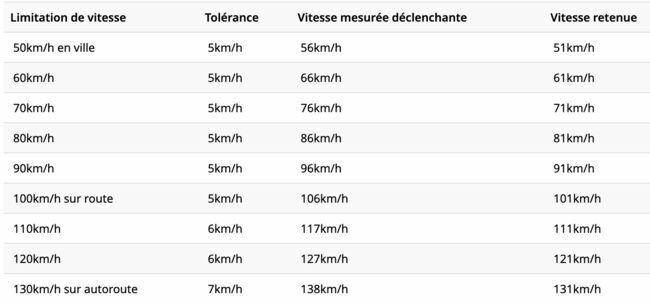We fear radars as soon as we are behind the wheel. Being flashed is never pleasant and it happens that, despite our vigilance, we pass one of these machines above the authorized limit. However, exceeding it does not mean that you will receive a ticket at home a few days later. Based on the principle that control speedometers are not infallible, a margin of error is taken into account between the speed recorded by them and that ultimately retained for the driver. Both are also indicated on the PV. Here is how it is calculated.
What is the margin of error?
As indicated on the website of the Road safetywhat we call tolerance threshold represents “the margin of error with which the recorded speed is observed“. Article 6 of thedecree of June 4, 2009 relating to road traffic control radars sets the margins of error applied to the different radars depending on the type of measurement: static at the side of the road or in a mobile situation. After deduction, what remains is “the selected speed”, that is to say the speed from which a fine, accompanied by a withdrawal of points on the driving license, is possible.
The case of a fixed radar
The first type of radar installed on the side of the roads, the fixed radar monitors the speed of drivers in the most dangerous areas. It instantly calculates the speed of the vehicle as it passes, from the front or rear, in one direction or both.
How is the tolerance threshold calculated?
Up to the authorized limit of 100 km/h, the tolerance applied by the calculation system is 5 km/h. Beyond this speed, the margin is 5%. The motorist is thus penalized from a speed above 138 km/h on the motorway, where the limit is 130 km/h and from 56 km/h for limitation to 50.
The case of a mobile radar
We are talking about mobile radar in this case, for a measurement of speed taken while moving, either by an unmarked law enforcement car or by private companies.
How is the tolerance threshold calculated?
If the vehicle photographed is traveling at less than 100 km/h, a tolerance of 10 km/h is systematically subtracted from the measured speed. By traveling at 58 km/h on a lane limited to 50 km/h, the driver sees his speed reduced to 48 km/h, therefore below the limit. For a speed above 100 km/h, the margin that applies is 10%. If the driver is traveling at 152 km/h for example, the chosen speed will be 136 km/h.

Source :
“Radar: Speeding tolerance, margin of error and retained speed“- LegiPermis the Blog
“The different types of radars“- Road safety
